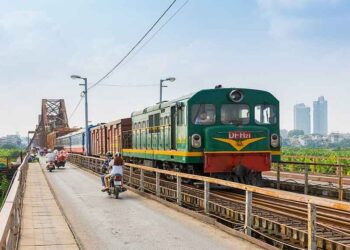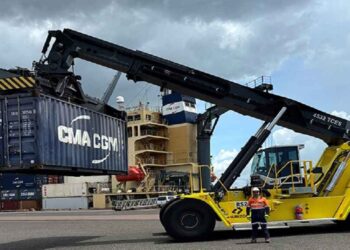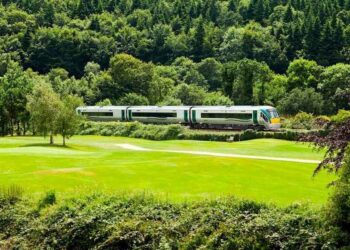America has looked enviously on the development of high-speed rail routes elsewhere in the world, particularly Japan. The country has one the highest rates of private car ownership and some of the busiest roads in the world and it came to realise, perhaps late, that alternative forms of transport would be needed to cope with the continued demand for fast, efficient long- and short-distance journeys.
In April 2009, the federal government, through the American Recovery and Reinvestment Act (2009), committed to $8bn as initial investment and $1bn per year for next five years to develop high-speed rail projects across ten major corridors.
With the population in California expected to grow from 38 million to 60 million by 2030, the government had to upgrade its transport system. There were three options: increasing airport capacity; constructing new roads; or introducing high-speed train services between major cities. Detailed study showed that high-speed lines are economically, environmentally and socially profitable, and one was therefore proposed in 2000.
The California high-speed train project is to be the first high-speed train system implemented in the US. After more than a decade, the project received the state voters approval in November 2008 through Proposition 1A for Safe, Reliable High-Speed Passenger Train Bond Act that authorises $9.95bn in bonds to establish a clean, efficient high-speed train service linking the Southern California, the Sacramento San Joaquin Valley, and the San Francisco Bay Area.
The act also procures $950m to finance capital improvements to commuter and intercity rail and local transit lines to serve the high-speed train system. An implementation plan approved in August 2005 estimates that it would take eight to eleven years.
The decision to start the project was made in 2011, after detailed environmental studies and public opinion gathering, despite project proposal was made in way back in 2000. An initial funding bill for construction of a 130-miles stretch of the project was signed in July 2012.
In September 2012, a 65-mile section the project was approved by the US Federal Railroad Administration. Construction is expected to start in 2013. The work has been divided into a number of smaller projects.
The 800-mile high-speed train system is estimated to cost $68bn. Only partial state and federal financing have been approved for the project, which includes $2.6bn in state bonds. Federal government is to provide 25% to 33% of construction costs ($10-12bn). Another $4.5-$7bn will be generated through P3 funding (Public-Private Partnership).
California High Speed Rail Authority
The California High Speed Rail Authority is the governing body overlooking the project. The commission’s first objective is to develop a system connecting the San Francisco Bay area with Los Angeles, and then work on extensions to San Diego and Sacramento.
The state government of one of the country’s fastest-growing areas, California, decided in 1993 to establish an Intercity High-Speed Rail Commission to develop a framework for the implementation of a high-speed rail network in the state. The group focused on potential for inter-city travel; journeys of between l00 and 500 miles, at speeds of over 200mph (320km/h).
Under the authority which created it, the commission’s first objective was to develop a system connecting the San Francisco Bay area with Los Angeles, and then consider extensions to San Diego and Sacramento.
California high-speed network engineering study and evaluation
The authority has carried out five evaluations which comprised a preliminary engineering study of the line between Los Angeles and Bakersfield, the corridor and environmental constraints, a ridership demand and market analysis study, modal cost comparisons and possible economic impact, and financing options.
Three public inquiries have been held, and the findings handed over to the High Speed Rail Authority, which has the powers to implement the works needed for the project.
The ability of the state’s highway and airline network to continue to cope with future growth was questioned, and the Commission concluded that, while the extreme ends of the proposed route were well served, intermediate markets, such as the cities of Bakersfield and Fresno, enjoyed less frequent and less competitively priced public transport.
Apart from cutting accident rates, the high-speed rail will reduce the congestion costs that approximate $20bn per year. The rail system is also projected to save $12.7m barrels of oil per year by 2030.
The main project under planning is the San Francisco-Los Angeles high-speed line, which could connect the two cities in just 2 hours 30 minutes. Over the nearly 450-mile trip this express service is expected to average about 170mph, that will make it the second-fastest average speed run train in the world after the 174mph TGV-Est Paris to Champagne express.
The forecast expects 117 million passengers annually by 2030, with a relatively low passenger cost per mile, with one-way fare of $55.
After the completion of the authority’s June 2000 Business Plan, it hired the consulting firms of national railroads from three countries – SNCF (French), DE Consult (German) and JARTS (Japan) – for peer review.
Integrating California’s transport infrastructure
Residents of the Los Angeles and San Francisco areas are also all too conscious of other possible major factors which affect existing modes of transport, but from which rail travel is less likely to suffer. The region is prone to dense fog, making travel on the already congested roads even more hazardous.
The area is a well known earthquake zone, and the promoters of the scheme are keen to point out that it would offer an alternative means of transport in the event of such a natural disaster.
Supporters of the campaign to build the high-speed line have said that without it, California could need up to 3,000 miles of new highway, 60 new airline gates and five more runways as the population grows from 35 million to 48 million over the next quarter century.
The new high-speed rail line would have trains capable of speeds up to 200mph.These would carry up to 115,000 passengers per day and serve up to 30 stations along a 700-mile route serving the population centres of San Francisco, Los Angeles, Sacramento and San Diego.
Consideration is already being given to how the new high speed line would fit in with other transport systems. Most of the line is expected to be built alongside existing roads and railways and the two-track line will have 20 times the capacity of the neighbouring road, with 20 trains per hour in each direction.
A ruling gradient of 3% is envisaged, which will allow for a comfortable high speed journey. At certain locations the high-speed line is expected to use viaducts and tunnels, in a similar manner to other high-speed rail projects around the globe.
The electrically powered high-speed train system would draw electric power from overhead wires connected to the commercial power grid. In braking it would regenerate electricity back to the grid, thereby conserving power and reducing costs.
California high-speed rolling stock
Even though the final funding is not in place for the project, consideration has been given to the types of train that could be developed for the new high speed line.
Technology is expected to be based on already proven high-speed trains from the likes of Japan, Germany and France. Each train will be up to 1,300ft long and capable of carrying 1,300 passengers. A variety of different cars will be included in the formation, such as quiet cars, play areas for younger families, café and bar cars and possibly even a conference facility. It is expected that 150 intercity trains will operate through the line each day.
The high-speed train will reflect the design of the new Series 500 and 700 Shinkansen trains that operate with a maximum speed of about 187mph in Japan and French TGV and AGV (Automotrice Grande Vitesse). The steel-wheel-on-steel-rail technology has been preferred to maglev (magnetic levitation systems) technology.
Signalling and communications
High-speed train traffic control and communications systems are centrally regulated and managed during all hours of operation. These systems monitor and limit the train’s speed, schedule, routing and headway.
A sophisticated signalling and communication system is in the early planning stages. One proposal is to install intrusion alarms on the fencing, which would be linked to a central control system capable of detecting foreign objects on the tracks. In-cab signalling will be capable of automatically stopping trains if necessary.
Routes
On 15 November 2007, the Authority issued a recommendation that the high-speed rail follow the Pacheco Pass route, rather than the Altamont route as the preferred high-speed train alignment between the Central Valley and the Bay Area. Similarly, the route via Palmdale is selected between the Central Valley and Los Angeles for the rail network.
The future
The 130 mile stretch in Central Valley will be built between 2013 and 2017. This will extend the initial construction to one of the two proposed routes to build an Initial Operating Section (IOS) which initiates operation of the high-speed rail.
The two proposed routes are Merced to San Fernando Valley and San Jose to Bakersfield. They require estimated investments of $27.2bn and $24.7bn respectively. The work will take place between 2015 and 2021.
The Bay area and the Los Angeles Basin will be connected and metro link in Southern California will be integrated with Caltrain in Bay area. This work will be carried out between 2021 and 2026 at an estimated cost of $20bn.
In the fourth part to be executed from 2026 to 2030, the existing rail systems will be electrified to make operations flexible for high-speed rails. The project cost is estimated to be $23.9bn.
Two options are proposed in the fifth sub division – the construction of phase two extensions towards Sacramento and San Diego, or the completion of the full phase one between Downtown San Francisco and Anaheim through Los Angeles.
Construction of the central valley section is expected to create 100,000 jobs over five years. Phase one is expected to create 65,000 direct and indirect jobs on an average.
The High Speed Rail Authority has the job of directing the development and implementation of the system, including funding. The funding will generated through state bond revenues, federal government funds, and public, private and local funds.
The project will reduce carbon dioxide emission by three million tons, divert over a third of the air trips travel and about 6% of auto-travellers. Once built, the system would not require operating subsidies and will generate over $1bn in annual profits.
Comparatively, in Japan the Shinkansen has about 75% of the market in air transportation for a trip time about 2.5 hours. In Europe, high-speed rail occupies 50% of the traffic where rail trip times are 4.5 hours or fewer. If travel time is two hours or fewer, it occupies 90% of the market share.
































